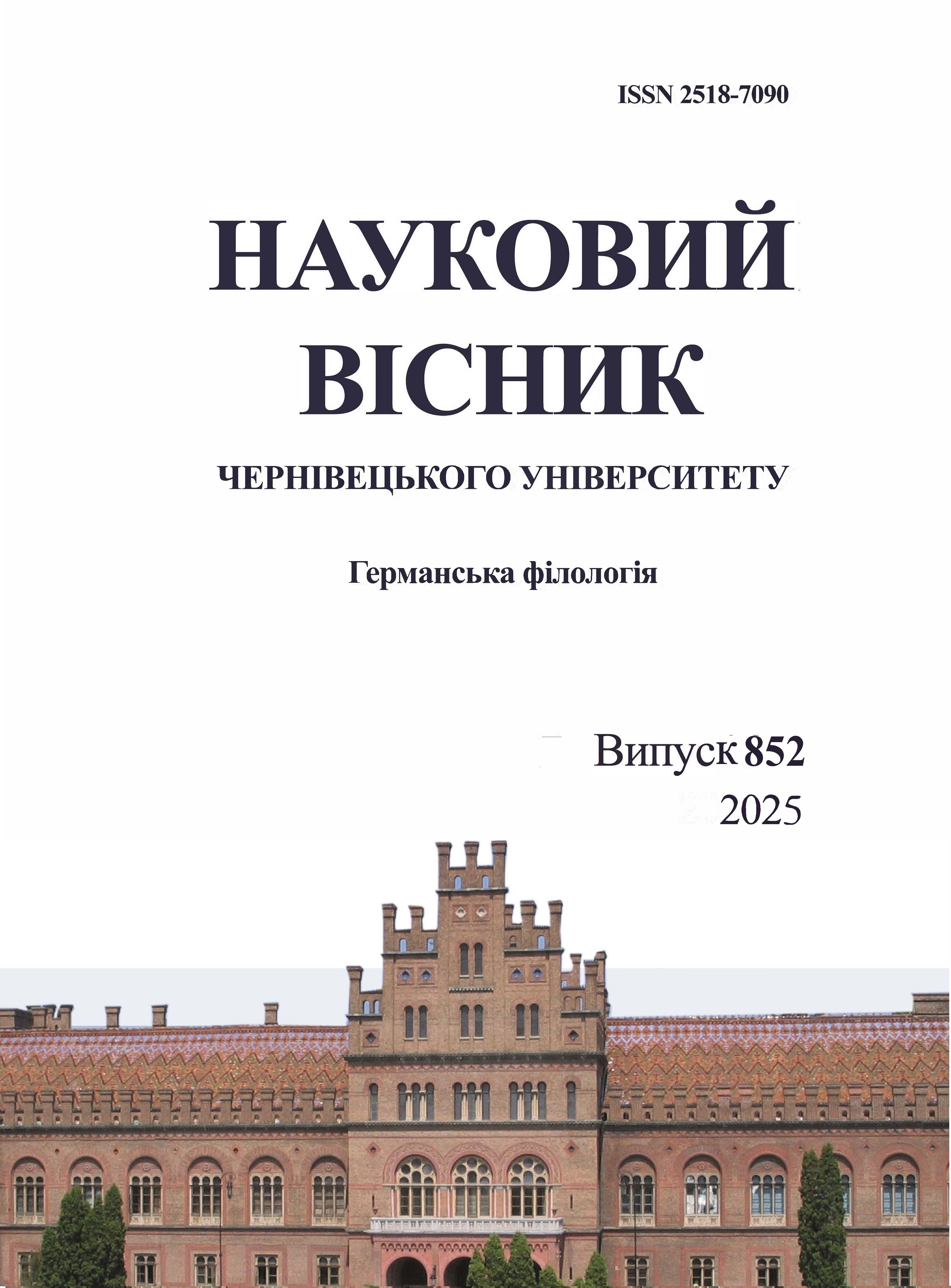DER EINSATZ DER LESESTRAATEGIEN IM DaF-UNTERRICHT
DOI:
https://doi.org/10.31861/gph2025.852.14-22Keywords:
reading competence, reading strategies, reading techniques, foreign language teaching, text comprehensionAbstract
This paper explores the fundamental role of reading as a key skill in the teaching of German as a foreign language (DaF). Reading is not viewed merely as a receptive activity, but rather as a complex, active, and interactive process that operates on multiple levels – from visual and phonological recognition to syntactic and semantic understanding, and ultimately to critical reflection on texts. The paper offers both a theoretical foundation and practical insights into the development of effective, differentiated, and motivating reading instruction in the DaF context.
A central focus is placed on Laveau’s (1985) functional classification of reading exercises, which distinguishes between receptive, reproductive, and productive types. This categorization allows for the targeted selection and design of reading tasks based on learning objectives, language proficiency levels, and instructional stages. The paper demonstrates how receptive tasks help verify comprehension, reproductive tasks support cognitive transfer, and productive exercises foster active language use and expression.
Additionally, the article presents a range of reading strategies (e.g., elaborative, organizing, and repetitive) along with associated reading techniques that learners can apply before, during, and after reading to enhance comprehension and retention. Special emphasis is also placed on support strategies – metacognitive, affective, and volitional – which enable learners to assess their understanding, regulate their motivation, and engage with texts more purposefully.
The distinction between intrinsic and extrinsic reading motivation is discussed in relation to its impact on reading behavior, attention, and overall learning outcomes. Intrinsically motivated learners read out of personal interest, whereas extrinsically motivated learners may read due to external expectations or requirements.
Downloads
References
Denysenko, M. K. (2002) Pryntsypy komunikatyvno-oriientovanoho navchannia. English. 37 S.
Poseletska, K., Borovskyi, N. (2023) Vykorystannia avtentychnykh krainoznavchykh tekstiv u protsesi formuvannia inshomovnoi kompetentnosti u chytanni. Zhurnal kros-kulturnoi osvity/ Journal of Cross-Cultural Education. Vinnytsia:VDPU, 2023. No 2. S. 28-37.
Christmann, U., Norbert G. (1999) Psychologie des Lesens. In: Handbuch Lesen, edited by Bodo Franzmann et al., München: Saur. S. 145-223.
Ehlers, S. (1998) Lesetheorie und fremdsprachliche Lesetheorie aus der Perspektive des Deutschen als Fremdsprache. Tübingen: Gunter Narr. 320 S.
Gold, A. (2007) Lesen kann man lernen. Göttingen: Vandenhoeck & Ruprecht. Universitätsverlag C. Winter, S. 99-118.
Laveau, I. (1985) Sach- und Fachtexte im Unterricht. Methodisch-didaktische Vorschläge für den Lehrer. München: Goethe Institut.
Lewandowski, T. (1991) Deutsch als Zweit- und Zielsprache. Handbuch zur Sprachförderung. Trier: Wissenschaftlicher Verlag.
Rosebrock, C., Nix, D. (2020). Grundlagen der Lesedidaktik und der systematischen schulischen Leseförderung. 9. Aktual. Auflage. Baltmannsweile: Schneider-Verlag Hohengehren.
Stiefenhöfer, H. (1991) Übungen zum Leseverstehen. In: Handbuch Fremdsprachenunterricht, edited by Bausch, Christ, and Krumm, Francke: Tübingen. 204 S.
Texte, Themen und Strukturen : Deutschbuch für die Oberstufe / Herausgeg. von B. Schurf und A. Wagener. Cornelsen Verlag. 2020. 624 S.
Westhoff, G. (1997) Fertigkeit Lesen. München: Langenscheidt. 176 S.
Cheerleading - Mehr als nur mit Pompoms wackeln. URL: https://latill.eu/discover






